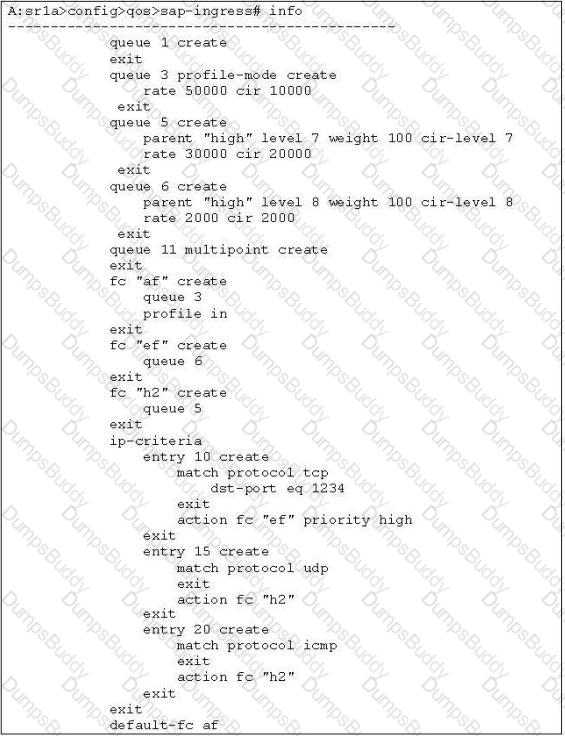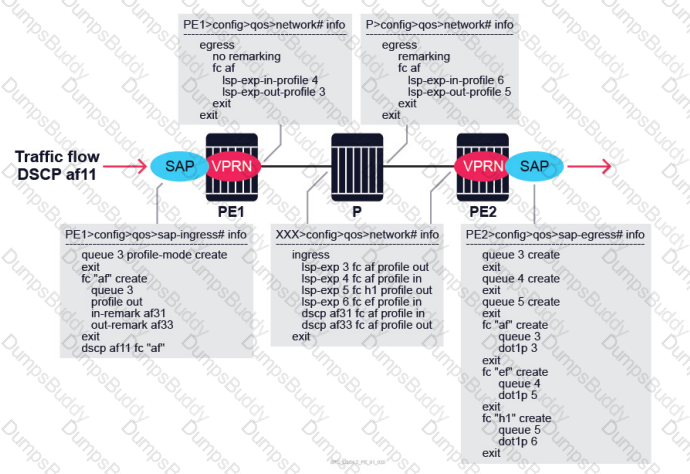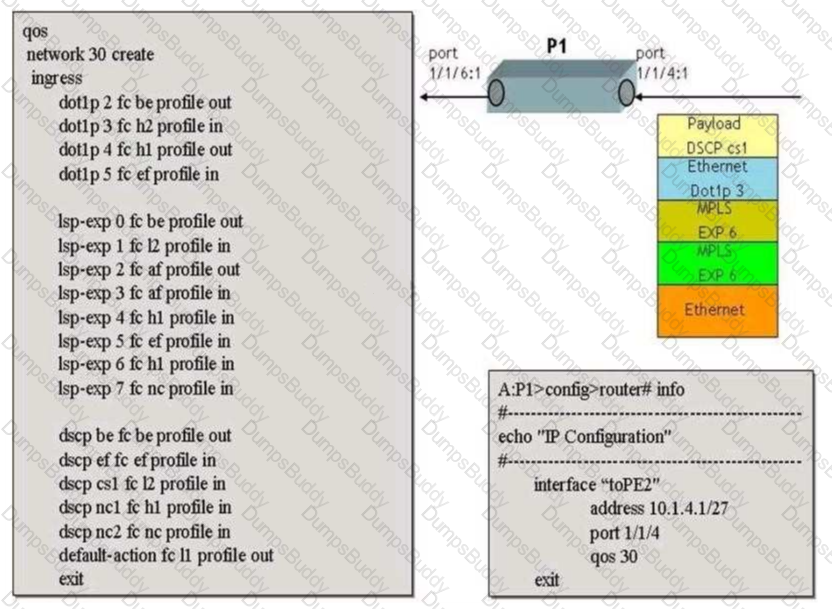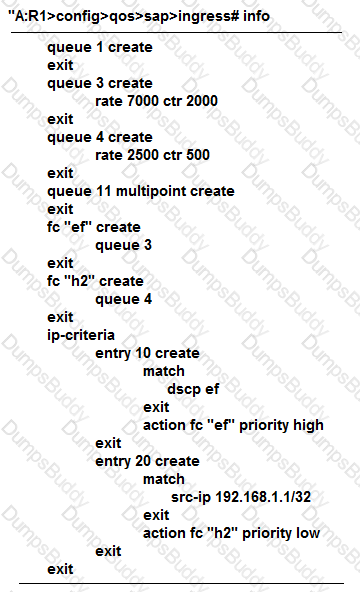4A0-107 Nokia Quality of Service Questions and Answers
At which points can traffic be marked or remarked on the Nokia 7750? (Choose two)
Which of the following is NOT an adaptation rule supported on the Nokia 7750 SR for calculating the operational CIR/PIR of a queue?
Which action should be taken to ensure that packets do not use the shared buffer space when put into a queue?
Which of the following statements regarding egress FC and profile over-ride are TRUE? (Choose two)
Traffic assigned to forwarding classes is placed into queues, while the contents of the queues are serviced in a controlled manner using____________.
Which of the following modules has 768 MB of buffer memory that dynamically allocates between its two MDAs?
Which of the following statements describe the primary objectives of the policing of traffic flows on the Nokia 7750 SR? (Choose two)
A profile-mode queue is configured with the following attributes: MBS = 10 KB, CBS = 5 KB and High-Priority- Only = 30%. Assume there is no CBS overbooking, and the slope-policy is disabled. If the current queue depth is 8 KB, what will happen to an in-profile packet?
Click the exhibit button below. Given the SAP-ingress policy, which of the following statements are TRUE? (Choose three)

Packets arrive at the VPRN SAP on PE1 with DSCP marking of af11 and Dot1p of 2. According to the QoS policies applied at routers PE1, P, and PE2, what is the dot1p value of packets egressing routerPE2? (All the SDPs are MPLS-encapsulated, and all interfaces are using their default trust states).

Which of the following rate-limiting approaches are used on the Nokia 7750 SR? (Choose two)
To implement Hierarchical-QoS (Multi-tiered scheduling), which of the following actions must be undertaken? (Choose three)
Which of the following statements describe the operation of WRED on the Nokia 7750 SR? (Choose three)
A frame belonging to a Layer 2 service is encapsulated in an MPLS tunnel at a network-egress port. Which of the following fields in the frame can be marked or remarked at the network egress port?
Click the exhibit button below.

Based on the configuration of the network policy (below), what will be the forwarding class associated with a MPLS encapsulated customer packet that arrives on a dotlQ encapsulated network port 1/1/4:1 on P1 with the following characteristics:
EXP value = 6
DSCP value = cs1
Dot1pvalue = 3
Which of the following fields can be marked or remarked for frames belonging to a Layer 2 service?

In the image shown above, the SAP-ingress policy is applied properly to a Nokia 7750 SR. A packet is received from an IP address of 192.168.2.2 with DSCP set to AF. Which forwarding class and priority level is assigned to this packet?
What type of unwanted packet drops can the proper configuration of a queue’s burst-limit parameter prevent?
A queue is configured with the following attributes:
MBS = 10KB
CBS = 5KB
High-Priority-Only = 30%
Assume that there is no CBS overbooking and that the slope-policy is disabled. If the current queue depth is 8KB, what will happen to an in-profile packet arriving in the queue?
Which of the following statements about the DiffServ and IntServ QoS models is FALSE?
Which of the following statements describes a queue’s weight parameter that is used in the hierarchical scheduling?


